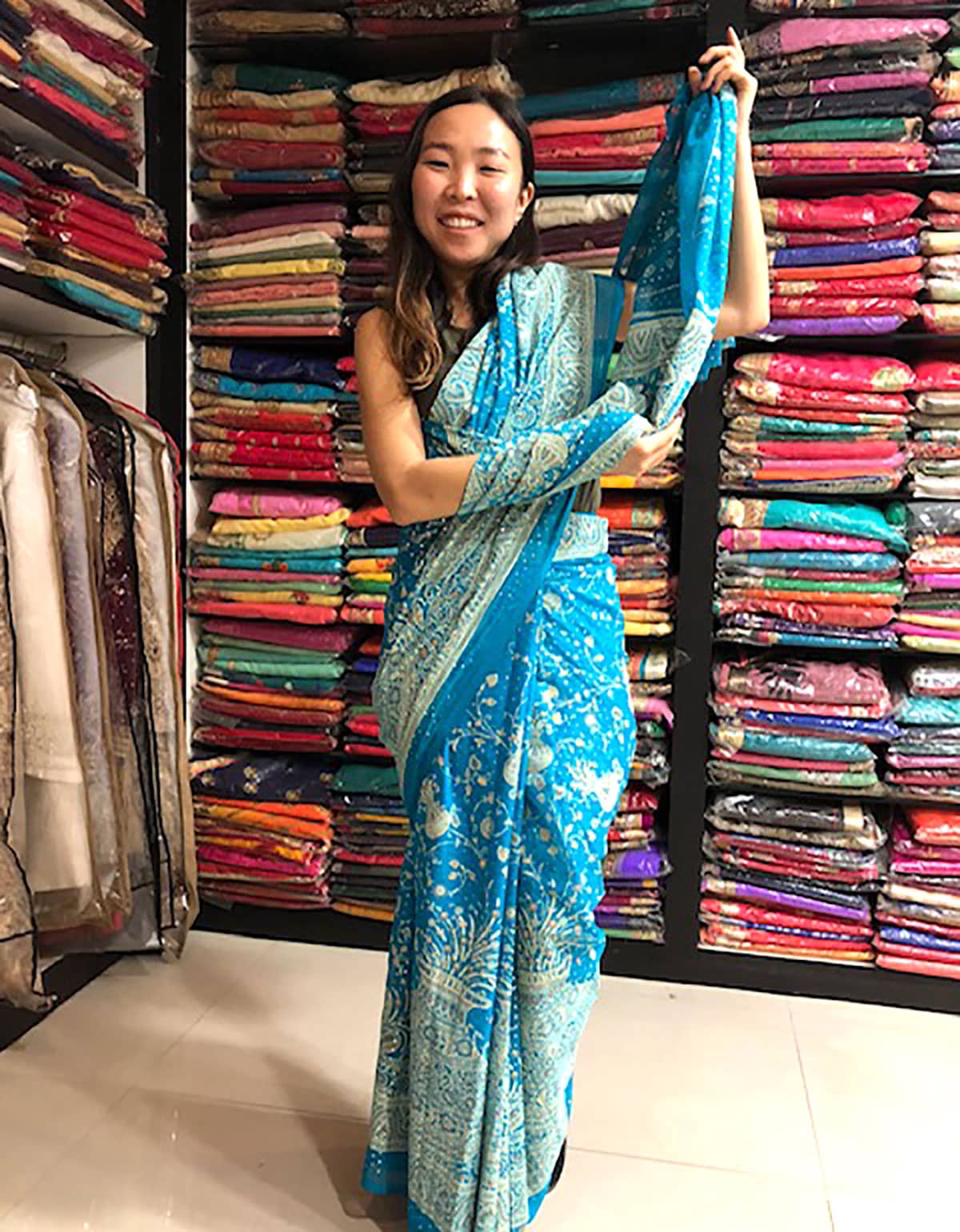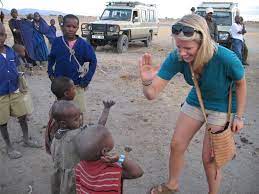An experienced traveler Aryuna with experience of 25 countries talks about her independent trip to India. Upon arrival in this country, she experienced a culture shock. Here chaos and mud coexist with beautiful architecture. And Aryuna returned from India deeply impressed by a completely different culture. And she shared her travel experience: itinerary, what to see in India, how to choose a hotel, prices and a lot of other useful information.
– Let’s get acquainted)
– Hello! My name is Aryuna, now I work remotely as a foreign economic activity manager, at the same time I try to develop my own travel project, and more recently I started helping in a startup project on online marathons.
My first trip outside Ulan-Ude happened when I was in the 10th grade, then my mother and I went to Mongolia. Then, after graduating from high school, I entered the Changchong Polytechnic University (China) with a degree in international economics and trade and lived in China for 5 years. At the time of my departure to China I was 17 years old, during my studies we traveled to cities in China, and at that time I went to America under the Work & Travel program to New York for 4 months and traveled all the main cities of America 🙂
Well, from about 17 years old, I began to slowly travel myself. Now I am in Vietnam and this is my 25th country.
– How do you manage to combine work and travel?)
– I used to go on vacation while traveling, but now, with the transition to remote work, I prioritize where it is important to have time to do it. Usually I spend about a month in the country, so there is enough time to work and live in a new place 🙂
– Aryuna, what was your first impression of your trip to India?
– India is certainly not a country for the faint of heart, upon arrival in India I had a culture shock. Very gassed, dirty air, rickshaws, motorcycles, cars go back and forth in a chaotic movement. There are carts with cows and an elephant. Dust, rubbish everywhere, asphalt sticky from slops, and smells mixed with incense and urine. There are barbed wire everywhere on the fences, thin zombie people sleep right on the street, and in the middle of all this house there is beautiful architecture: bright multi-colored graffiti on the walls, Arab domes, patterns, Hindu statues, mosques and temples, and of course a variety of sari colors on girls. and black outlined men’s eyes.
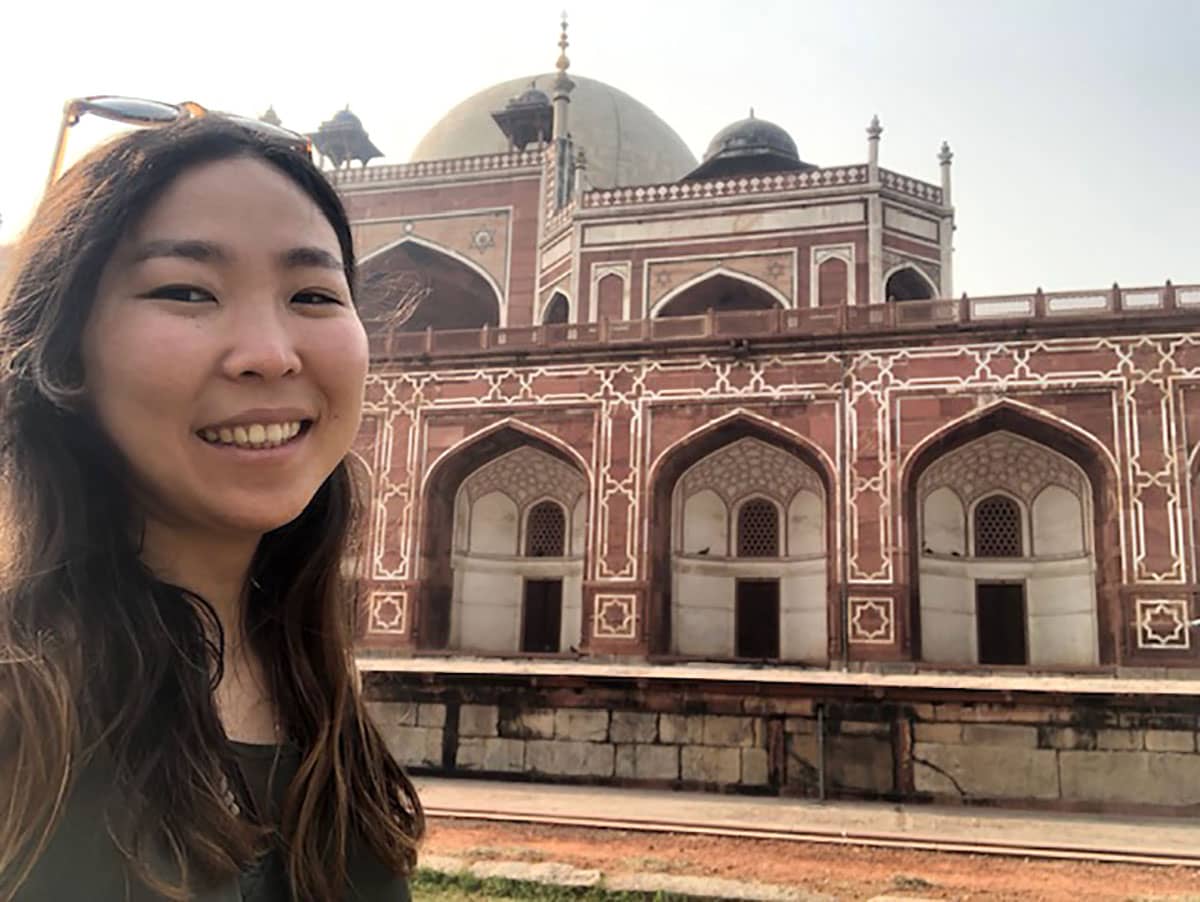
– Did you plan a route in India in advance, or did you decide on the spot what to see?
– I went to India with my family, and in order not to injure them greatly, I decided to prepare a little for the trip. I searched Google: what to watch, where to go, how to get around. For me, India was a complete mystery, and it was the first country in my long journey through Asia.
So, our tourist route in India was as follows : Delhi – Jaipur – Agra – Sankiza – Kushinagar – Bodhgaya – Varanasi – Sarnath – Goa.
– Tell us what to see in India?
- We were in Old Delhi, looked at the India Gate. Near the gate are street vendors offering various souvenirs and snake charmers. If you filmed them calling a snake, I advise you to leave them some money, otherwise they will follow you and demand money
- Humayun’s Tomb is a large complex with different temples and buildings, and a very beautiful garden.
- Lotus Temple is an interesting temple. And it is interesting because anyone can come there, regardless of their faith, and pray to their gods.
- Jama Mahal Cathedral Mosque in Delhi. Here you can see how the locals come to pray, how they first wash their feet and only then enter the Mosque.
- Near Jama Mahal is the Red Fort of Delhi – a replica of the Red Fort in Agra. You can go to the fort in Agra, and skip in Delhi.
- Taj Mahal in Agra. We went there early at dawn to see the towers flicker at sunrise. At the entrance they offer a guide, but I think it is possible without him, because our guide did not help us much, telling only the story of the Taj Mahal, which we read on Google, and then he persistently called us to go to the “unnecessary” shops of leather, shoes and to the tailors. Taj Mahal is made of specially brought white marble, it glows in different ways in the morning, afternoon and in the light of the moon. The Taj Mahal is not allowed at night, so you can enjoy its beauty only in the daytime and in the morning.
- The pink city of Jaipur. It is only inside the old city, and the pink color began to cast a little yellowish, at least it seemed to me so 🙂
- Ride the elephants. The elephant is a very important animal in India. The god of wisdom and prosperity is depicted with the head of an elephant. In general, the image of elephants can be seen everywhere in India: in temples, on clothes, on bags, on souvenirs. Feeding an elephant means inviting good luck to yourself. And the main delicacy of elephants is bananas.
- And finally, what a tourist should see in India is the city of Varanasi. In Varanasi, I advise you to get up early in the morning and take a boat ride on the Ganges River at dawn, where you can see: how the bodies of the dead are burned, the washing of women, the morning ritual ablutions, I even saw some people drink straight from the river.
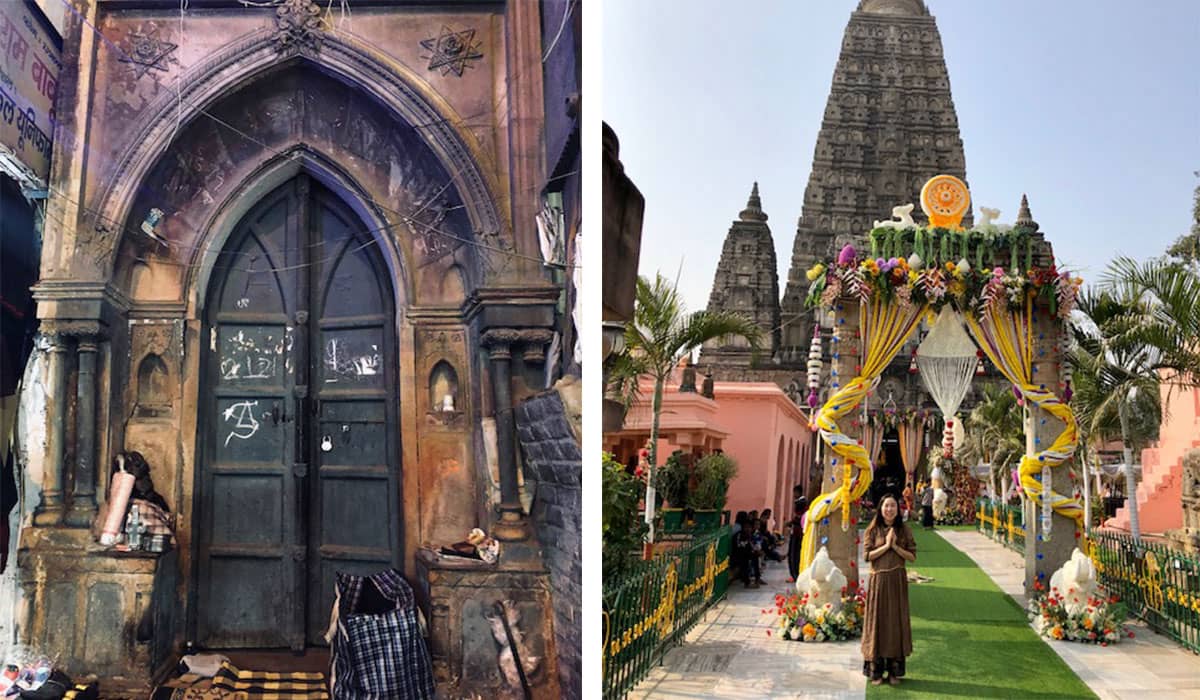
Prices for entry to attractions for foreigners differ from prices for local ones by almost 10 times. On average, entrance tickets range from 300 rupees (about 278 rubles) to 600 rupees (about 556 rubles), and the Taj Mahal is more expensive – 1100 rupees (about 1020 rubles).
It is customary to enter temples without shoes, with covered shoulders and knees. In some churches, handkerchiefs are issued at the entrance: somewhere for a fee, somewhere for free.
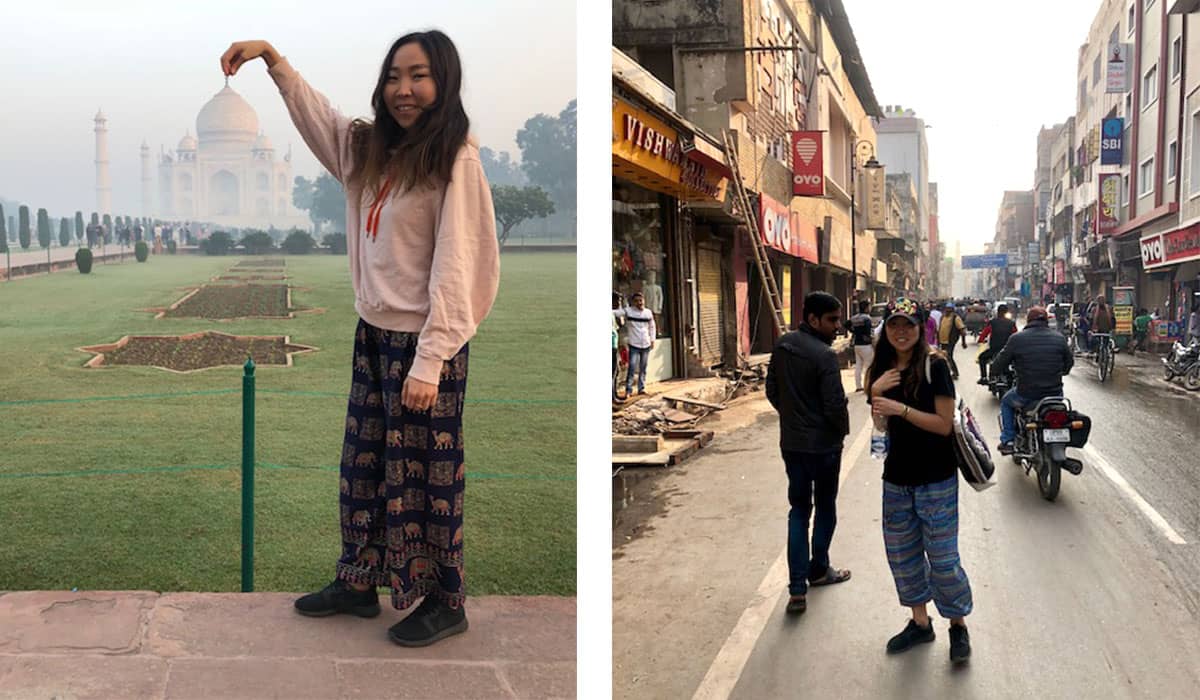
– Aryuna, tell us about your journey in India to the four holy places of Buddha? You wrote about this on your Instagram account)
– India is the country where Buddhism was born, and our main goal in our trip to India was to visit the Holy Places of Buddha and the teachings of the XIV Dalai Lama.
- 1st place is located in Nepal, in the city of Lumbini, where Buddha was born. Lumbini is located right on the border with India. We also visited Nepal, but that’s another story
- 2nd place is Bodhgaya. It is located near the city of Gaia, this is the place where Buddha Shakyamuni attained enlightenment. For me, Bodhgaya was the cleanest, most pleasant and comfortable place among all the places we have visited. The Bodhi tree itself, under which Buddha Shakyamuni attained enlightenment, is located on the territory of the Mahabodhi temple complex. Inside the Mahabodhi, all the places where Buddha meditated before and after attaining enlightenment are marked. Inside the temple there is a statue of the golden Buddha. Before visiting the temple, you need to take with you in advance fruits and sweets for offering, and then at the exit they will be given back to you already consecrated. Upon arrival home, you can treat all relatives and friends so that they too receive the blessing of the Buddha. There is also a house of lamps in the temple, where you can light a lamp for the health and well-being of loved ones.
Another important note – you are not allowed to take telephones and cameras with you to the temple, it is better to leave all electronic devices at the hotel in advance. There are photographers on the territory of the complex who will take you a photo as a souvenir, of course for a small fee. - 3 The holy place of Buddha is located in the settlement of Sarnath – this is the place where Buddha taught the first teaching on the four noble truths. Sarnath is located in the suburbs of Varanasi. You can stay overnight in Varanasi, and then take the train to Sarnath.
In Sarnath there is a temple complex with the remains of 5th century monasteries, among them the Dhamek stupa, on the site of this stupa the very first teaching was held. If you go a little further from the complex, you can see the large Mulgandha Kuti Vihar temple. I was amazed at the painting of the walls inside the temple, the life path of Buddha Shakyamuni is told on the walls. Behind the temple there is a Bodhi tree and a reenactment of the first sermon. - 4th place in Kushinagar, located almost on the border with Nepal. At this point, Buddha went to parinirvana. There is a special park in which all the ruins of the temples and the Parinirvana Stupa are located. In the Temple of Mahaparinirvana there is a 6-meter statue of Buddha going into parinirvana. Before visiting this place, you can buy a golden cape in advance and cover the Buddha with it.
All places are full of pilgrims, everywhere it is very clean, neat and pleasant to be. Its own special atmosphere of peace.
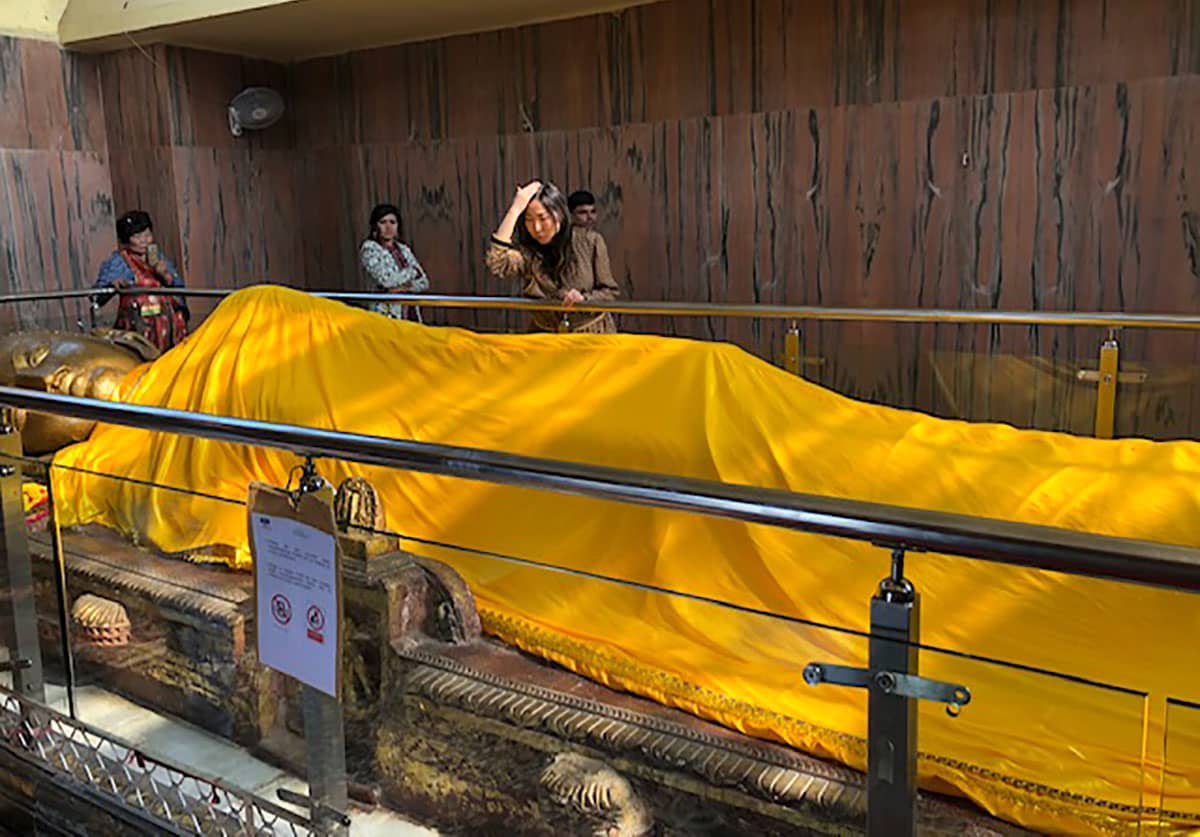
– What are the prices in India?
– We were budget travelers, we were absolutely comfortable with the local prices. Food prices were slightly cheaper than in Russia.
– How to choose accommodation in India? What nuances should you pay attention to so as not to burn yourself, because the service is not the best?)
– Be sure to read reviews on Booking or Agoda. When you check into the room, the first thing to do is to check the freshness of the linen. I know it sounds crazy, but in India it feels like the linen in the rooms is not changed. We found hair, wrinkled sheets and, frankly, just a dirty bed. In general, if possible, it is better to take bed linen for the owl.
Regarding breakfasts – if included in the price, read the reviews when booking, because there were cases that we could only eat cakes and tea from everything offered at breakfast.
By location, it is better to avoid markets and roads, it will be simply impossible to sleep, because life in India starts early and early in the morning and ends late at night.
– How to get around India?
– At first it was planned to travel by train. It is better to take tickets for the train in advance, there are different classes of tickets, I advise you not to take the cheapest ones. Travel with the working class of India together.
All tickets in India can be obtained through this site https://www.irctc.co.in/, but registration is required. Users with a non-Indian SIM card need to pay a fee of about 100 rubles.
We did not have time to buy tickets for the train, so we went to the agency’s tour and hired a car with a driver. Again, you have to bargain there. For example, in 4 days on the Delhi – Jaipur – Agra route with accommodation, we got about 6,000 rubles per person. Includes gasoline, toll roads and driver’s accommodation.
– What Indian dishes do you recommend to try?
– I liked naan tortillas, briyani rice. And that’s all
If you have never tried Indian cuisine before, I advise you to first go to a local Indian restaurant at home and try the food there.
I like more bland food, and I couldn’t eat a bouquet of spices in India, it seemed to me that I was eating incense sticks. Even the local McDonald’s had an Indian flavor, they couldn’t eat there either 🙂 Therefore, we ate cookies and fruits 🙂
I think you can stop by a cafe with Tibetan and Nepalese cuisine, if you are also not a fan of spices.
– Did you take out insurance while traveling to India? And do you need any vaccinations?
– I took out the most common insurance, fortunately it was not useful.
The trip was in November-December, and it turned out to be a little spontaneous, so there was no time to get the vaccinations in advance.
Do not drink tap water, only bottled water. I took a lot of sanitizer (antibacterial gel) with me and literally wiped everything in the world with it. Maybe it helped.
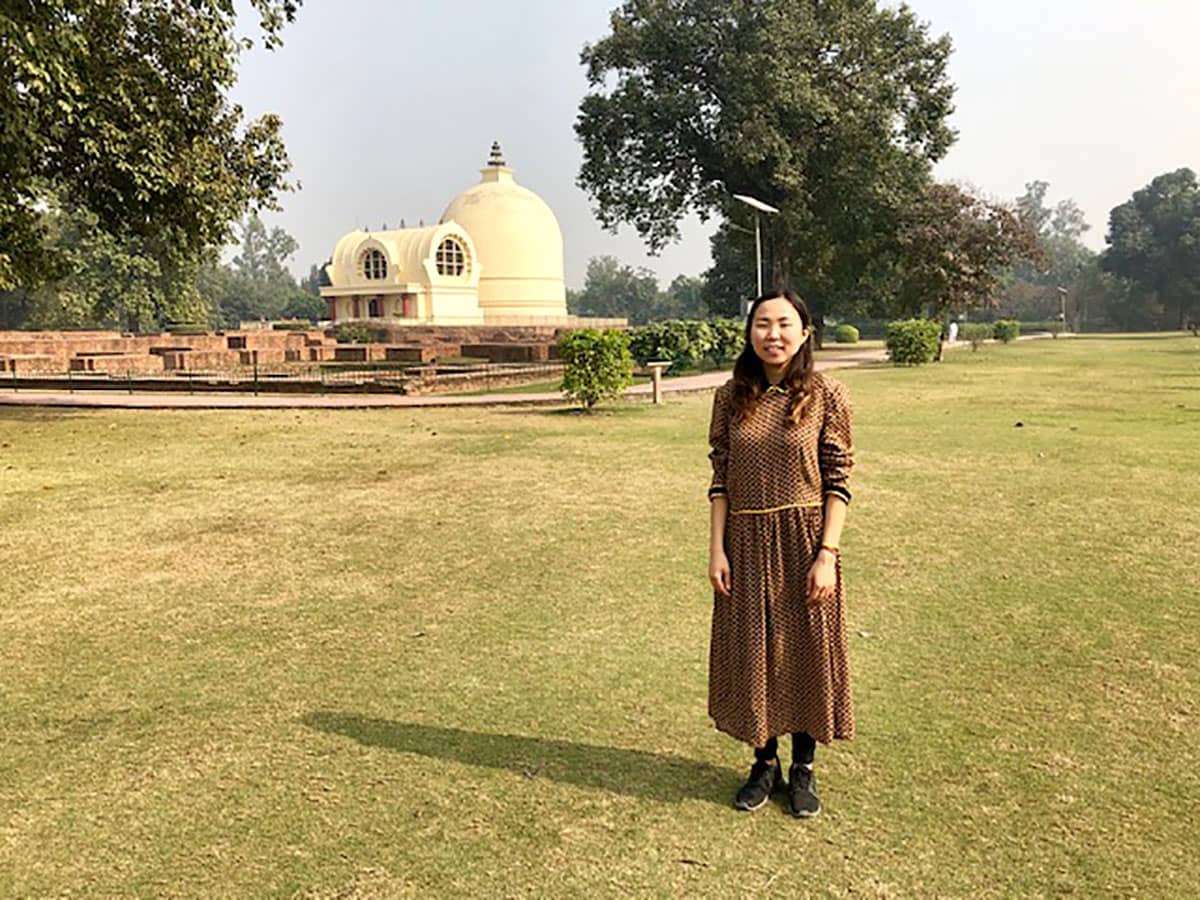
– They say that after traveling to Varanasi, you become a different person, all masks are erased and your worldview changes. What has India taught you?
– Varanasi is certainly the most atmospheric city, of which I have been in India, the whole life of Varanasi goes around the Ganges River. Every morning and evening rituals by the river. Be sure to take a boat ride on the river, and there you will see everything that Varanasi lives with.
They say that silver lies at the bottom of the Ganges River and therefore the water is self-purifying, which is probably why the residents of Varanasi are still alive and well, because the remains of people are scattered into the river after cremation, women wash down the river 100 meters from the crematorium and make it is in a special way – they just beat off the clothes on the stairs. People bathe, and some even drink from it. Our boatman took a couple of sips from the river in front of me.
I think that in order to become a different person after traveling to Varanasi, you need to spend several weeks there meditating and doing yoga, I did not have such an opportunity. I just came from Varanasi deeply impressed by a completely different culture, just remember the shots from the film “Shocking Asia”.
The most important thing from the trip I learned from the local population is that in any situation you need to be calm and accept everything that happens here and now. Despite all the local chaos as it seems to us, for ordinary Hindus, this is a routine life. Many, probably, do not even know another life. Everywhere there is absolute calmness and smiles, and sometimes an almost ascetic lifestyle.
– Your life hacks about traveling to India on your own.
- Don’t use bank cards, it’s better to take cash. I removed money from the card at an ATM and was hacked, the amount of money was stolen from the card. Moreover, the theft occurred when I myself was physically already in Thailand, the statement indicated the withdrawal of money in Bangalore.
- Bring your bed linen.
- Bargain anywhere and anytime. Straight really everywhere: in shops, travel agencies, bazaars.
- If you decide to travel by train, redeem all tickets in advance, at least 3-4 days in advance.
- Take a huge amount of antibacterial gel with you.
- And of course, always use common sense: don’t drink tap water, wash your hands, don’t wander around the back streets at night.
